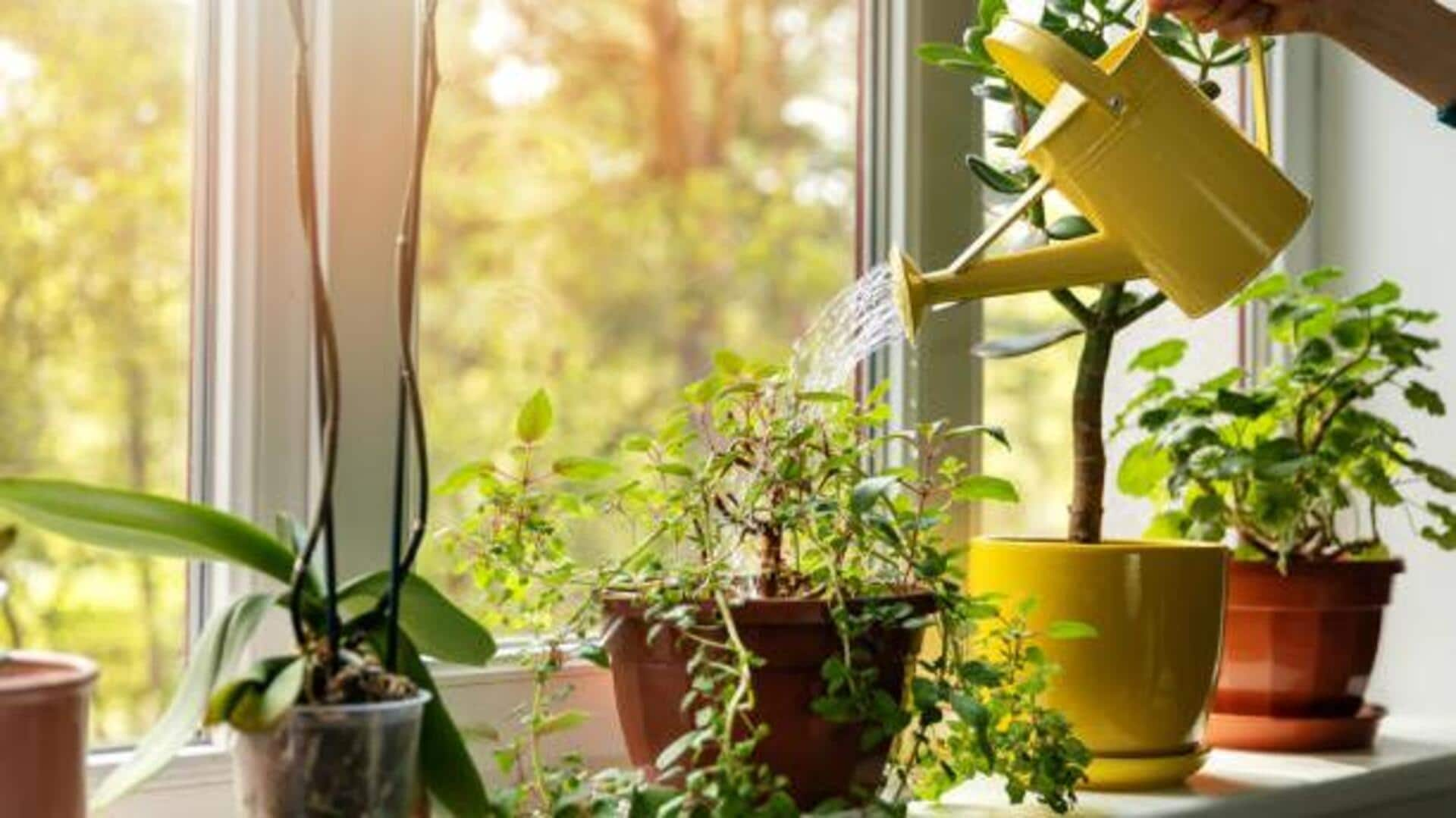
How to use rainwater for indoor plants
What's the story
Repurposing rainwater for indoor houseplant nourishment is a great way to conserve water while giving plants a natural source of hydration. Not only is rainwater free from the chemicals usually present in tap water, but it is also ideal for taking care of plants. By collecting and using rainwater, plant lovers can promote sustainability while keeping their houseplants alive. Here are some practical ways to collect, store, and use rainwater effectively for indoor gardening.
Collection methods
Collecting rainwater efficiently
To collect rainwater efficiently, homeowners can place barrels or containers under downspouts. These containers should be clean and covered to prevent debris from contaminating the water. A simple mesh screen can help keep leaves and insects out. Finally, it's important to ensure that the collection system is secure and stable to avoid spills or accidents.
Storage solutions
Storing rainwater safely
Once collected, rainwater should be stored in a cool place to prevent algae growth. Containers made of food-grade plastic or glass are recommended as they don't leach harmful substances into the water. Regularly check storage containers for leaks or signs of contamination to maintain water quality.
Watering tips
Watering techniques for indoor plants
When applying rainwater to houseplants, it's advisable to allow it to reach room temperature first. Cold water can shock plant roots. Use a watering can with a narrow spout for precise application at the base of each plant. Avoid overwatering by checking soil moisture levels regularly; only water when necessary.
Plant health advantages
Benefits of using rainwater on plants
Rainwater is soft by nature and devoid of salts and chemicals present in treated tap water, which is a huge plus for plant health. It maintains the soil pH balance and promotes nutrient absorption better than hard tap water. Over time, plants watered with rainwater may grow better and be more vibrant than those watered with treated sources.